Art of the Open Door/Gallery
‘The New Art Salon: Arte del Pueblo!’ Filling the Walls of Museum of Contemporary Art Santa Barbara, is an Unusually Juror-free All-Are-Welcome Group Show
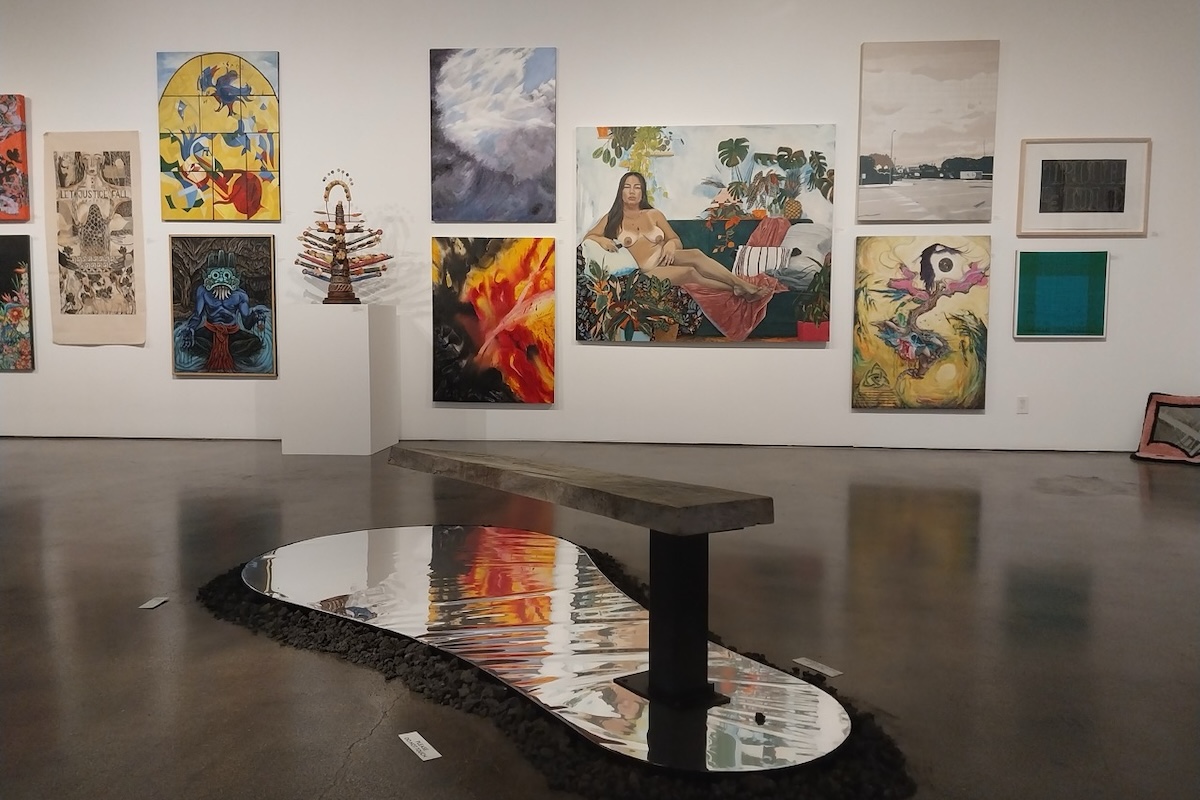
Over at the Museum of Contemporary Art Santa Barbara (MCASB), a new exhibition dares to pose the question: what if they gave a local art survey show and jurors and/or curators were not invited?
Welcome to The New Art Salon: Arte del Pueblo! based on the somewhat radical notion of an invitation to artists for a group show with a genuinely “open” invitation. Call it a semi-Marxist proposition (if that term isn’t too politicizing or polarizing): it’s about putting the means of assembling an art show in the hands of the artists from every corner of the art-making community.

The MCSAB space, which has hosted all manner of contemporary art over 40-plus years — including its previous life as Contemporary Arts Forum (CAF) — is presently more diversely and densely packed with art of many styles, media, and levels of artistic acumen than at any time in memory. As compared to other regional art survey exhibitions, such as Westmont Museum of Art’s recent Tri-County Invitational show in which 400-plus entries were juried down to a 45-work selection, the sky was the limit here. That concept alone is tantamount to a maverick aesthetic idea on the museum’s part.
If the sum effect of the glut of art inside the gallery can become dizzying, the experience begins with a refreshing bang before entering the space itself. MCASB’s outside “Glass Box” display case plays host to the fitting piece “Khioni Diptych,” by Cassandria Blackmore. In what may qualify as “best of show,” this reverse-painted glass piece sports elegantly broken glass panes inside this “Glass Box,” shattered in a disarmingly lovely iridescent display, less about destructive creative tactics than the end result of beauty from ruins.
Inside, whether seasonally inspired by summer’s onset or not, my eye was quickly drawn to a pair of strategically placed beach paintings, from different perspectives. Pamela Hill Enticknap’s “Beach” is a triptych spread of beach loungers, with figures in focus, though faceless. By contrast, Lucia de Miguel’s “Padaro Beach” is a witty aerial shot of a beach far below, with minute sprinklings of color — humans, umbrellas, surf boards, and accouterments — reduced (or elevated) to optical props on the sandy land.
Logical links have been made over many years between MCASB/CAF and MFA artists from UCSB, and this year we find a visually striking example in the form of Dannah Mari Hidalgo’s “Self-Portrait (Dannah Mari Hidalgo, Venus of Wiliawh).” The large, loud, nude study, recently seen as part of Hidalgo’s role in the UCSB MFA show last month, is a self-portraiture-based variation on the theme of Manet’s classic “Olympia.”

Sexual buttons are also intriguingly pushed in Pino’s “Blessed,” a modest but impactful hybrid of a “mud flap girl” outline containing the graceful beatific countenance of an angel.
Representing the in-house, three-dimensional camp are such varied works (and scales) as Cevins McCullah’s “Standing in Line,” a bench and mirror/faux pool, and B. Arriaga’s playful and pink ode to vermin, “Worship Ring, Presenting Bitsy Rats.” Occupying its own little corner of the main gallery, Diego Melgoza Oceguera’s “Altarities of the Past Present and Future” draws on mixed media ingredients including variously abstract, ritualistic imagery and a pink-painted tom tom drum. It suggests a shrine or altar of broad and ambiguous meaning(s).

Among the veteran and widely exhibited Santa Barbara–based artists in the Salon are Mary Heebner — with “Cycladic woman,” a gauzy figurative palimpsest on handmade paper — a subtle Dug Uyesaka collage, and Michael Irwin’s odd-shaped and trompe l’oeil canvas “Basin.” Michael E. Long, an expert in creating lifelike scenes in miniature, has paid a fastidious tribute to the historic restaurant Arnoldi’s — especially poignant given the eatery’s recent shuttering (hopefully a temporary lull).
In the side gallery, the wide range of work includes an example of veteran artist Anthony Askew’s Diebenkorn–esque geometric abstractions and JT Turner’s wry ontological or self-reflexive painting “Why?” asking the viewer and the artist the question “Why did soMeOne WRiTE ON This?” in randomly capitalized ransom note font. This museum space also fulfills its occasional function as an enclosed room for video art, screening Alex Eleazar’s video short “Between the Trees with My Father,” addressing a father’s response — or lack thereof — to a child’s unfolding transsexual nature.
In the photography zone, the art varies from the lucid dream-like appearance of Barbara Parmet’s “Tree Water Sky Dance,” an upside-downside mirrored image of a natural tree/lake scene, to the mordant charisma of Peter Honig’s “Sotto Voce.” Here, the startling image of a stilled bird in a bathtub, against a stark black backdrop, piques our sense of the surreal and the mortal. Is the bird subject dead, or asleep? This and other questions are craftily begged by the image.
Sometimes, particularly in a densely populated group show with artworks piled high and requiring careful maneuvering around a crowded floor, small and subtle ideas speak with a refreshing clarity. Such is the case with Demi Boelsterli’s small painting “Tre,” placed in a crowded company on a wall. Sneeze and you’ve missed it.
A charmingly rough-edged portrait of three fruits floating in compositional space (apples, tomatoes?), “Tre” follows a simple, almost folk art-like logic and palette, related to floral life, but only as distant kin: the painting plays more as a still life in dreamtime. This is a selective and subjective overview of the art that stood out of this idealistic local art smorgasbord. On another day and through another set of senses, this Salon’s democratic plentitude could conjure up another response entirely. Such is the nature of such a generous and ecumenical group show.
MCASB is located at 653 Paseo Nuevo on the Paseo Nuevo Upper Arts Terrace, above Eureka. The galleries are open Tuesday–Sunday, 11 a.m.–6 p.m. Admission to MCASB is always free thanks to visitor donations. See mcasantabarbara.org for more info.








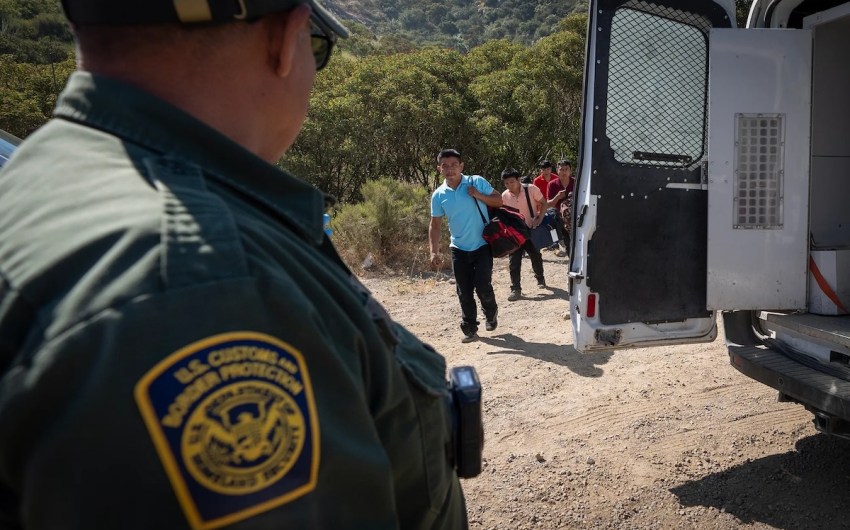


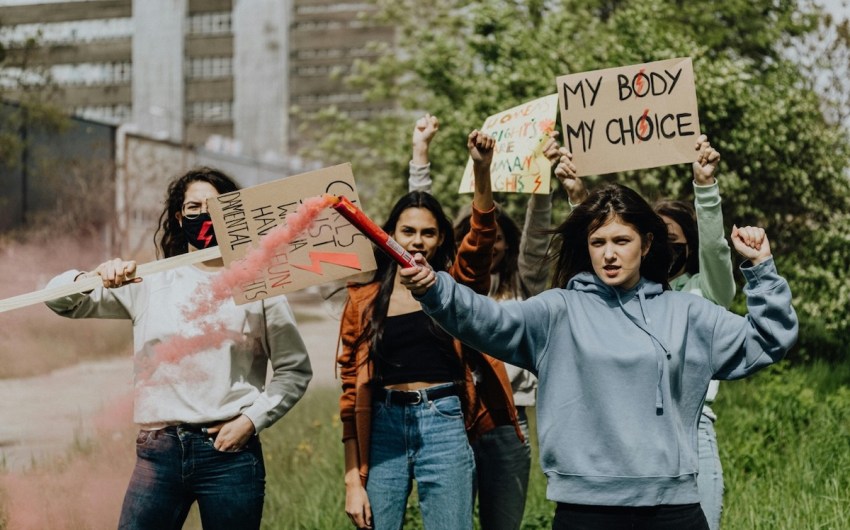
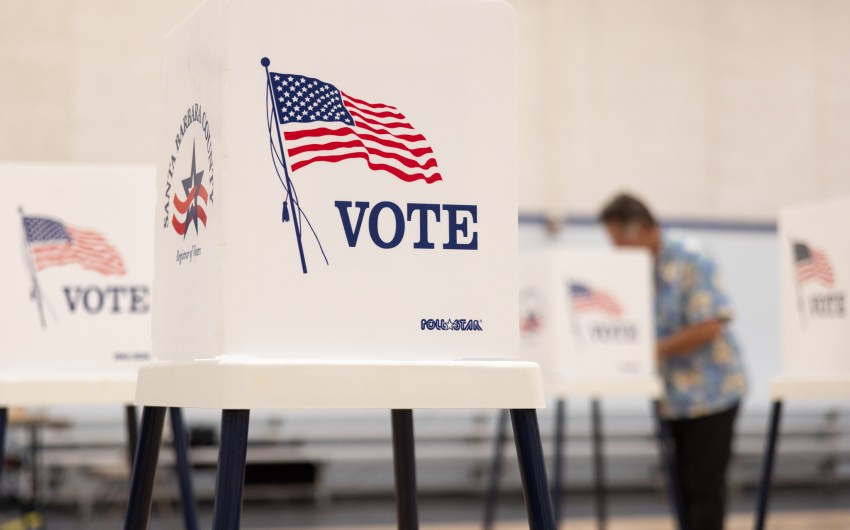



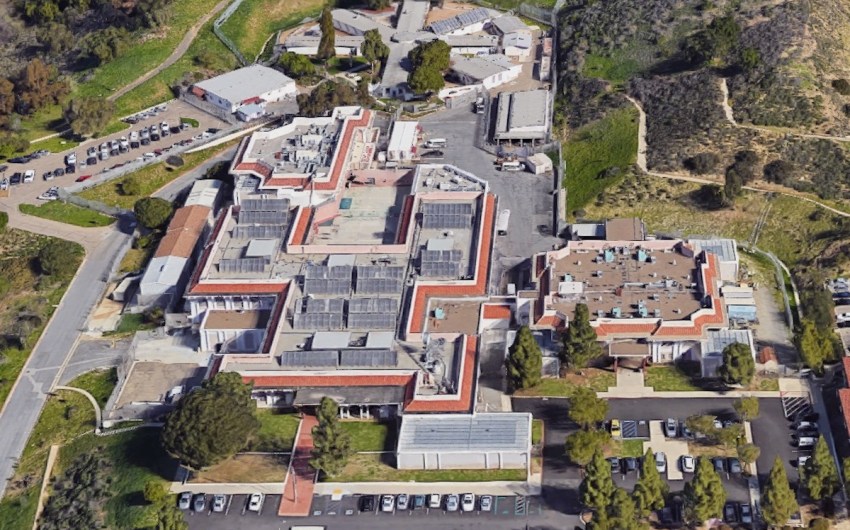

You must be logged in to post a comment.